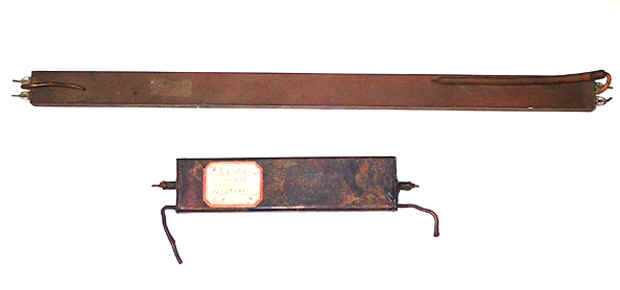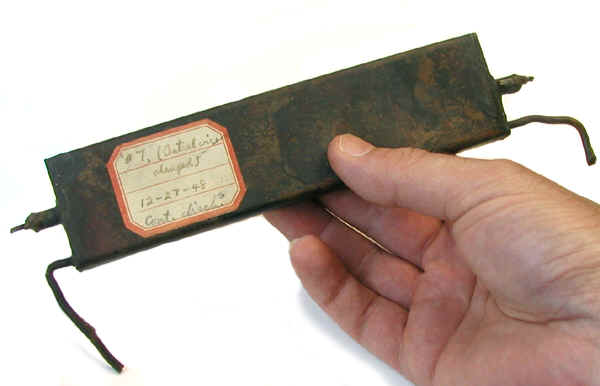GM Detectors for Triggering Cloud Chambers (1930s/50s)

Cosmic ray appearances in a cloud chamber are brief affairs that only last a second or so. As such, the timing of the photograph used to document these events is critical. One method that was used to activate the cloud chamber and the camera was to identify the cosmic ray event with a Geiger Mueller detector. Unlike most Geiger Mueller detectors which are cylindrical, detectors used with cloud chambers were typically flat. Their length is chosen to match the diameter of the cloud chamber over which the tube is positioned.
The long (ca. 17 x 1.25 x 0.5 inch) GM towards the top of the photo is extremely unusual in that it employs a multi-wire anode. The date of construction is uncertain. Nevertheless, its size seems to indicate that it might have been used to trigger the "falling" cloud chamber used by Carl Anderson on White Mountain in 1950.
The flat GM detector toward the bottom of the photo (ca. 7 x 2 x 0.5 inches), also in the following photo, was built between 1935 and 1940 at the California Institute of Technology for use by Carl Anderson and Seth Neddermeyer in triggering their 7 inch cloud chamber. This was the same chamber in which Anderson discovered the positron (an antimatter electron) and the muon (a major component of cosmic rays)—work for which he was awarded the Nobel prize in physics. Unfortunately, this tube was not used in the experiments that led to the discoveries of these particles. In 1948, the tube's fill gas was replaced so that it could subsequently be used as a proportional counter.

Donated by the California Institute of Technology courtesy of Bud Cowan.
